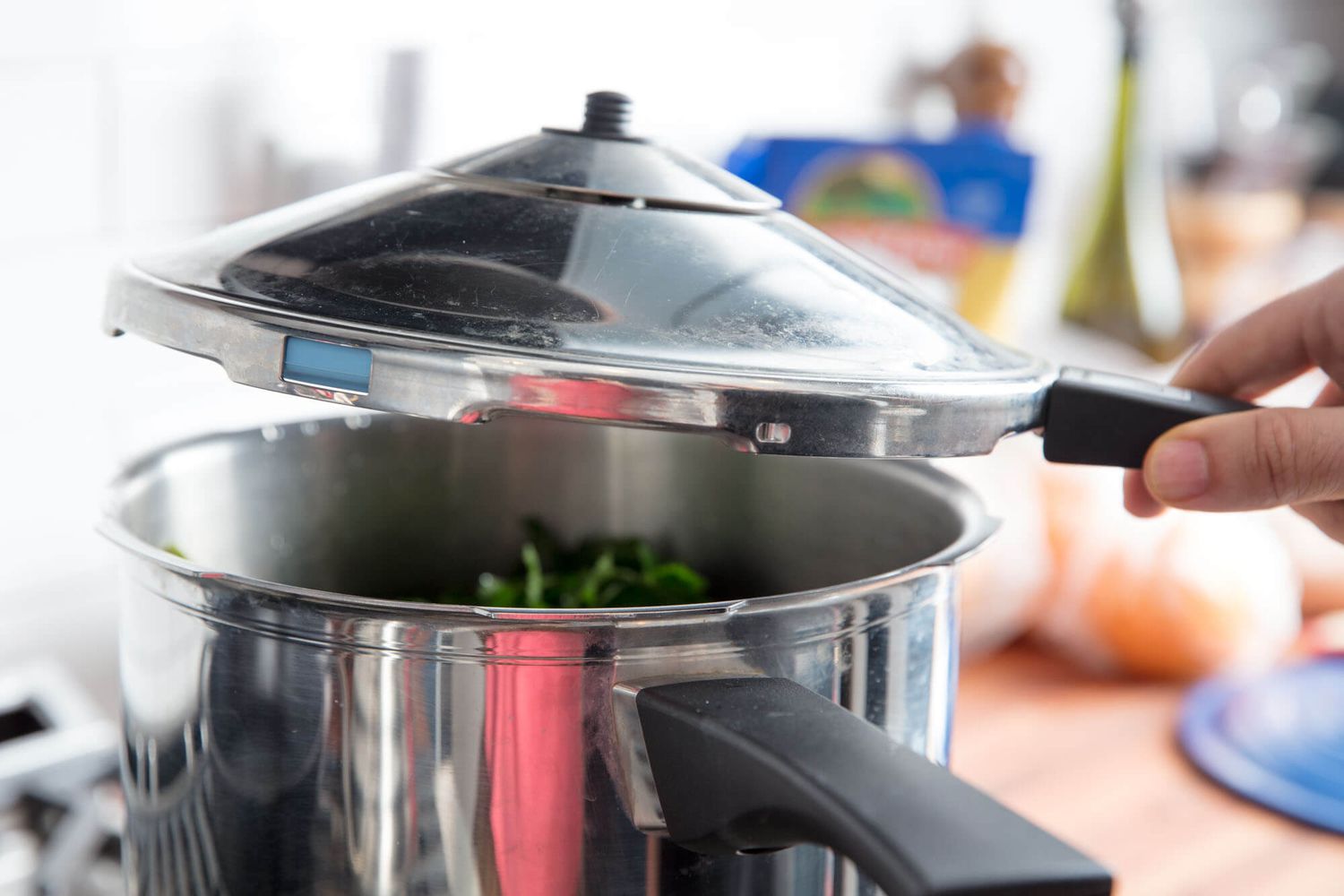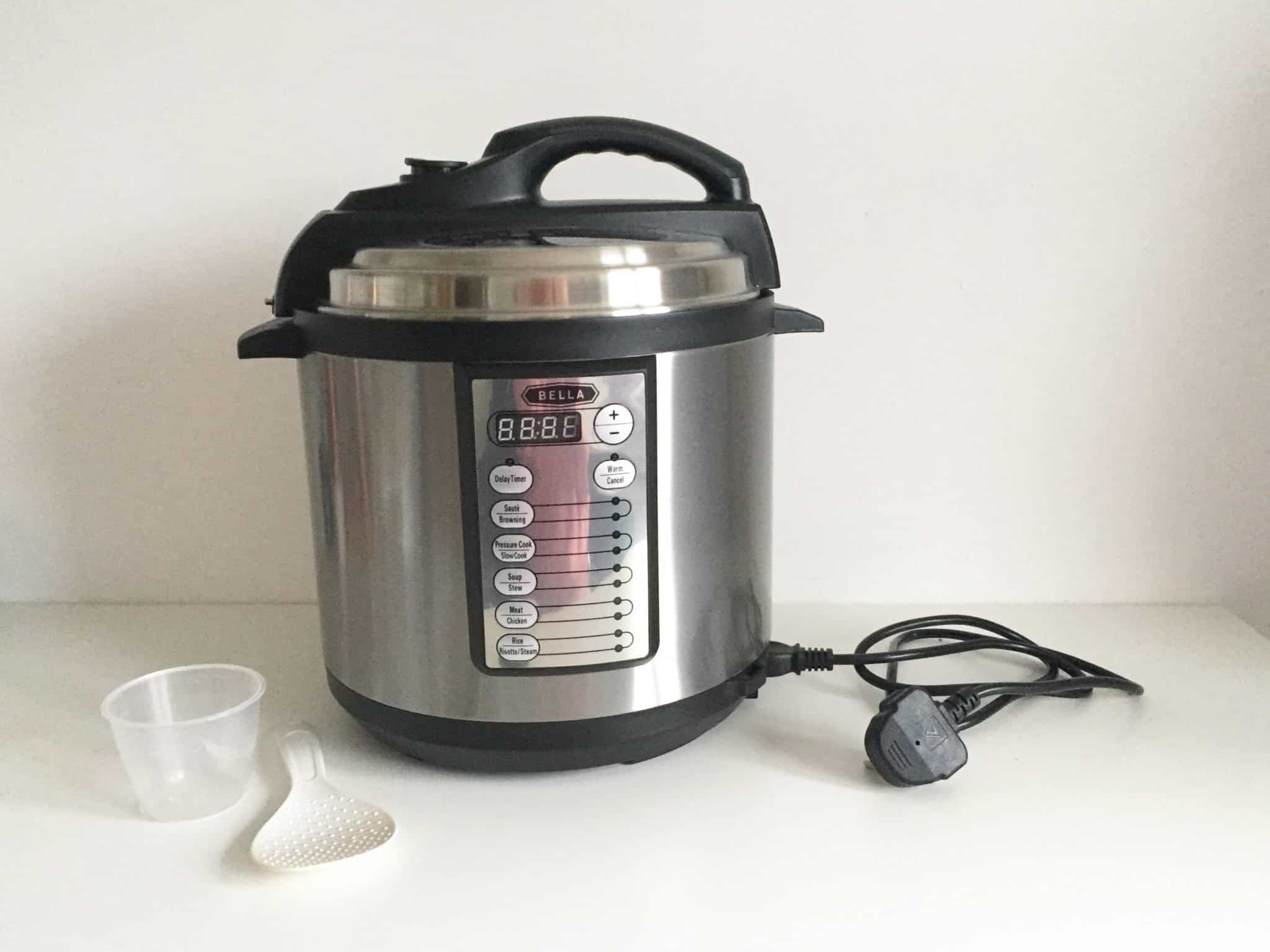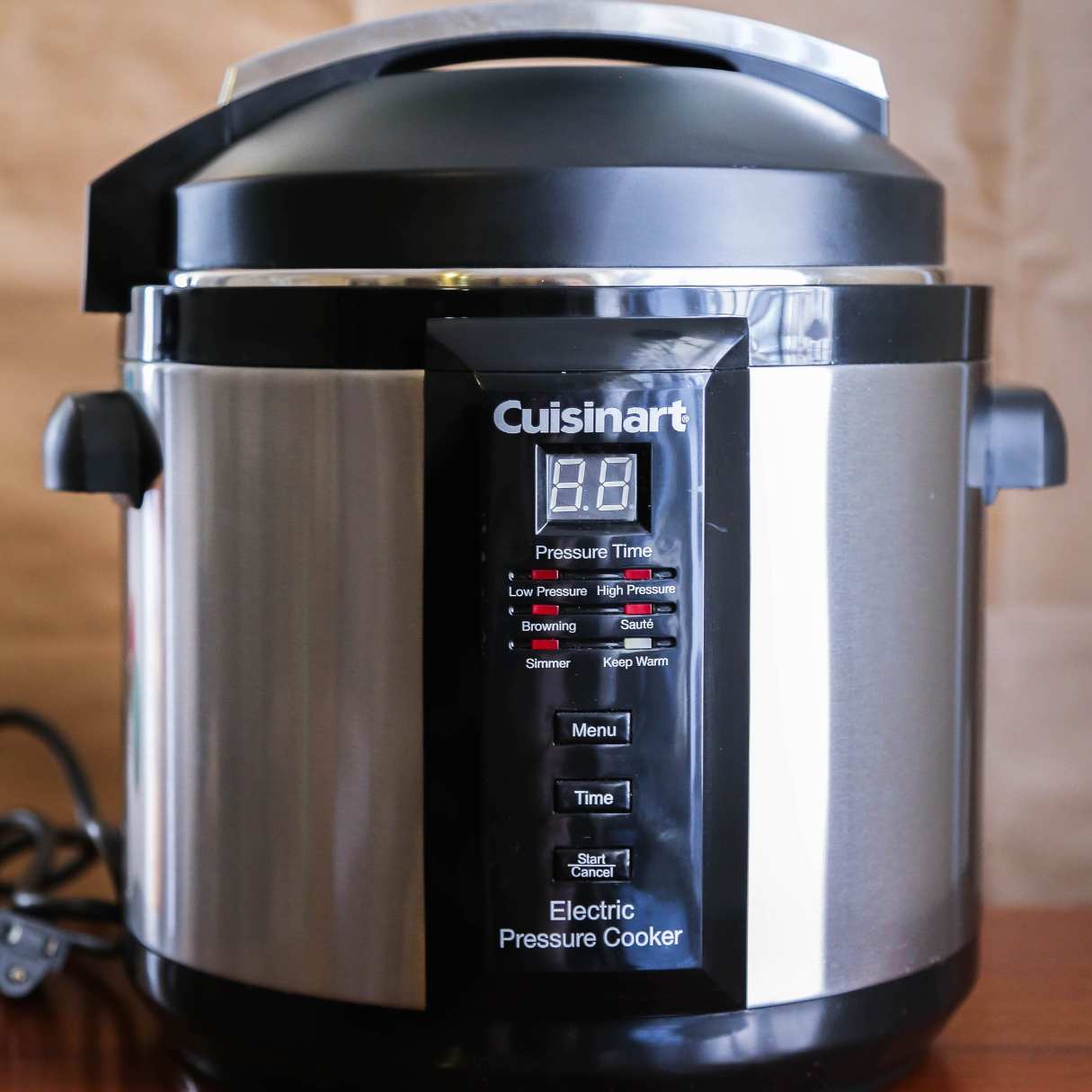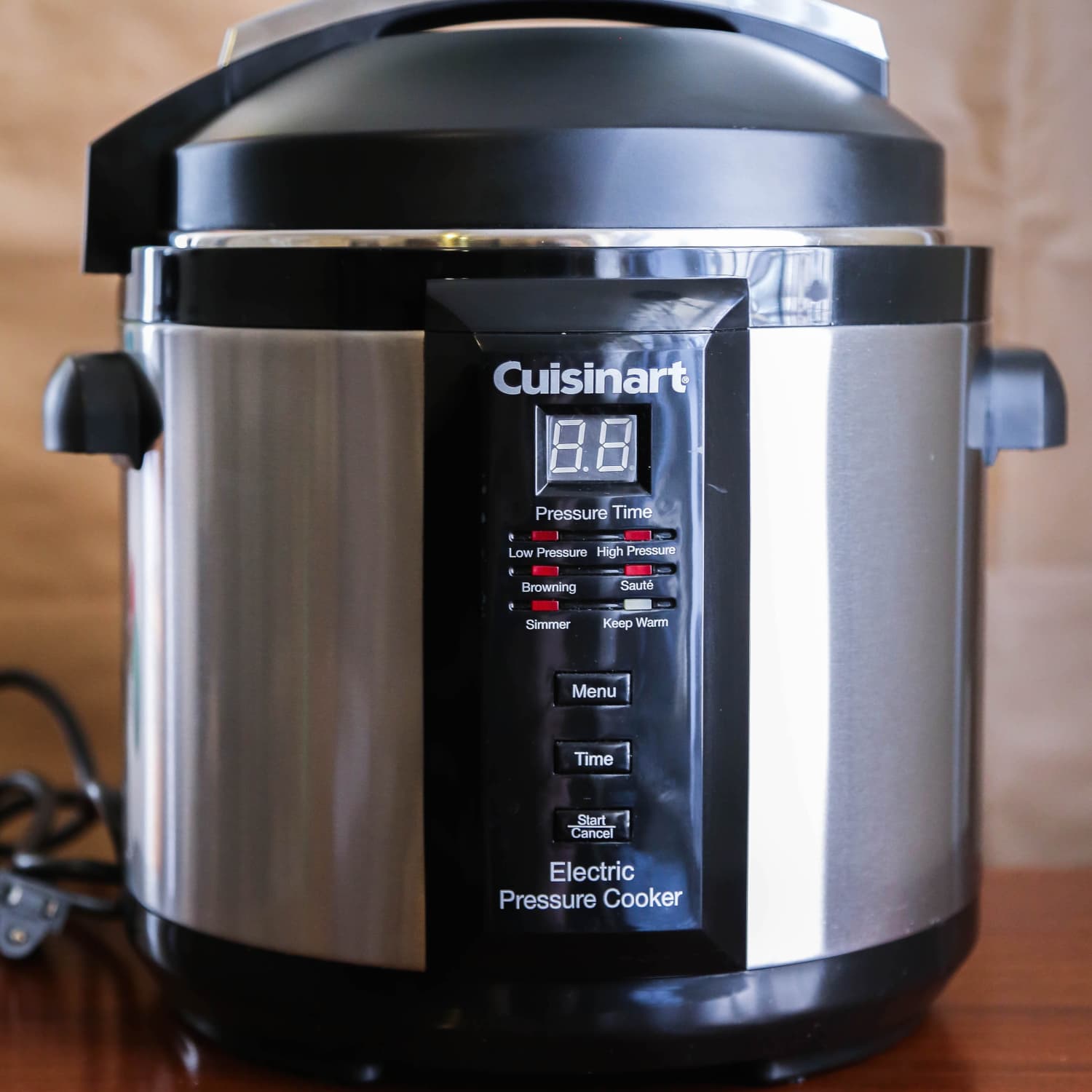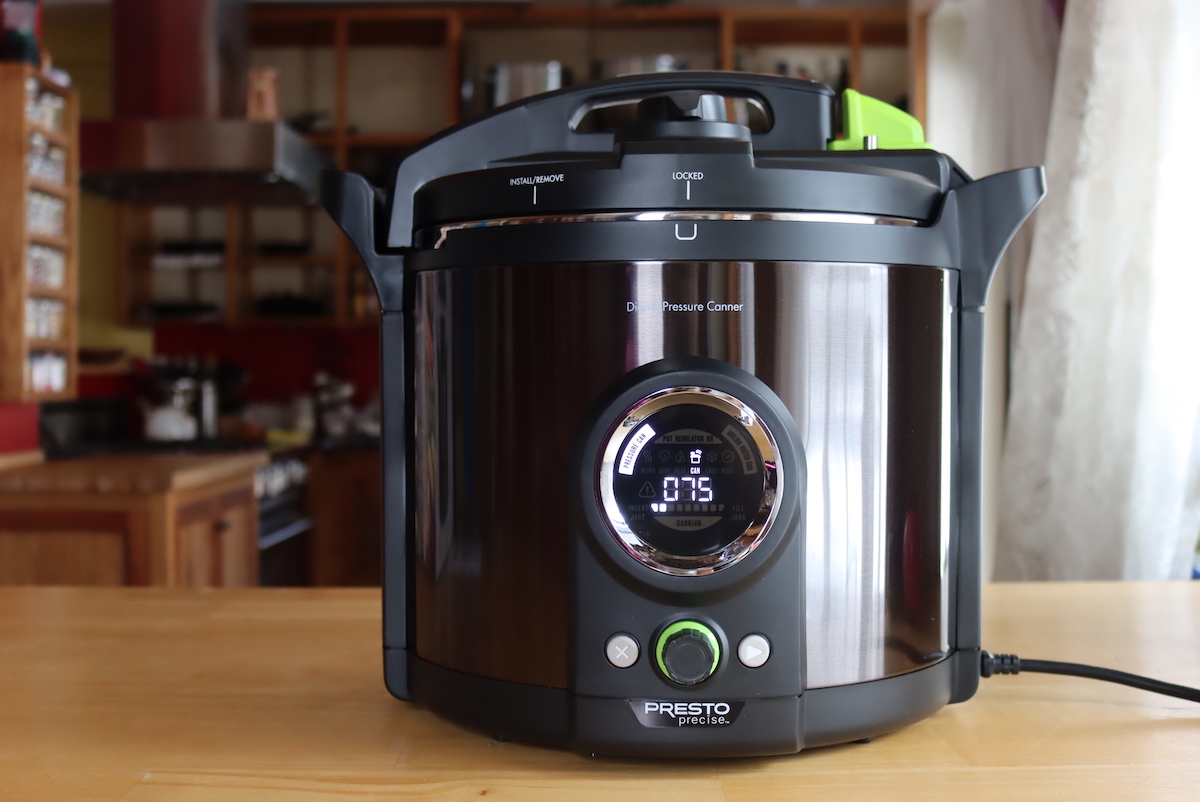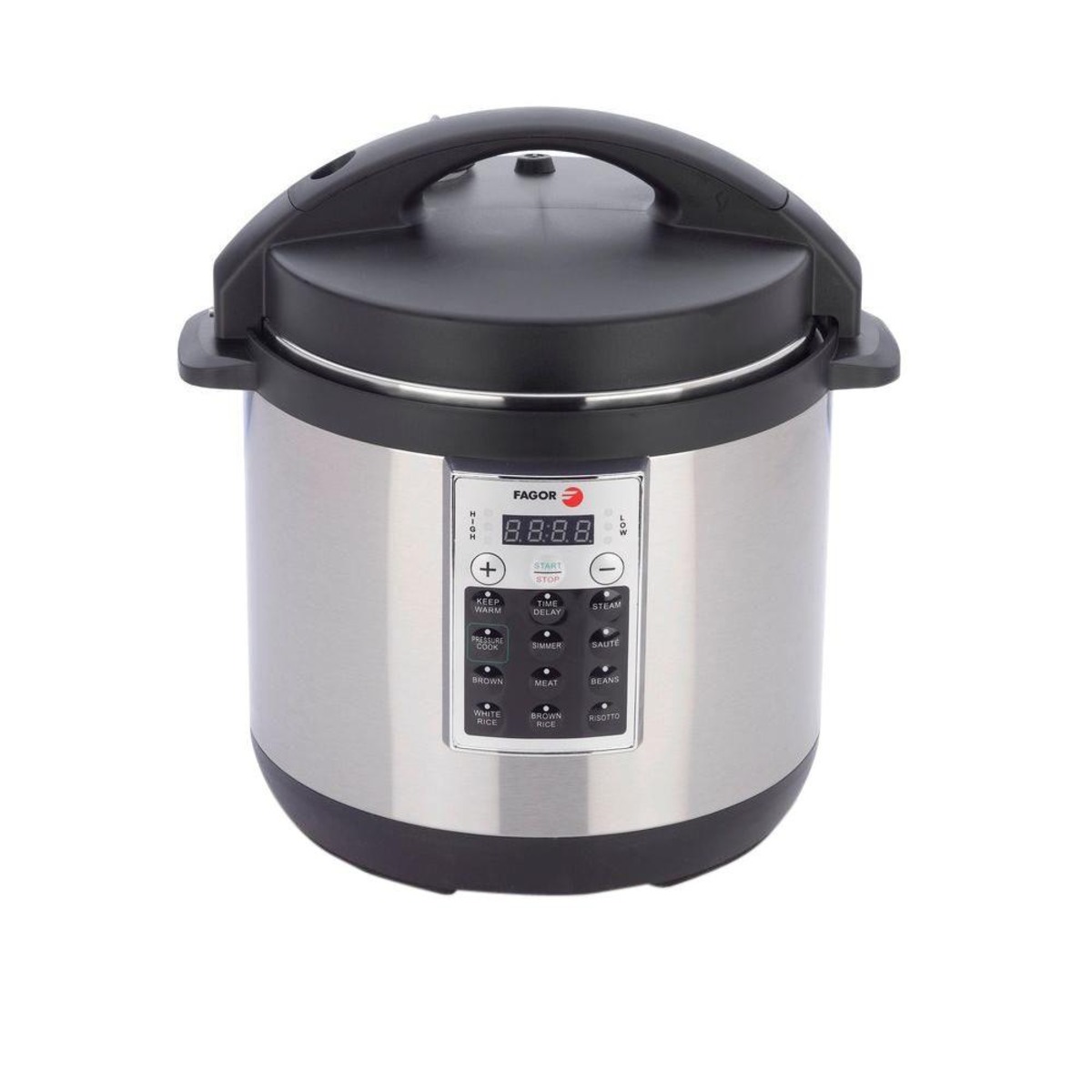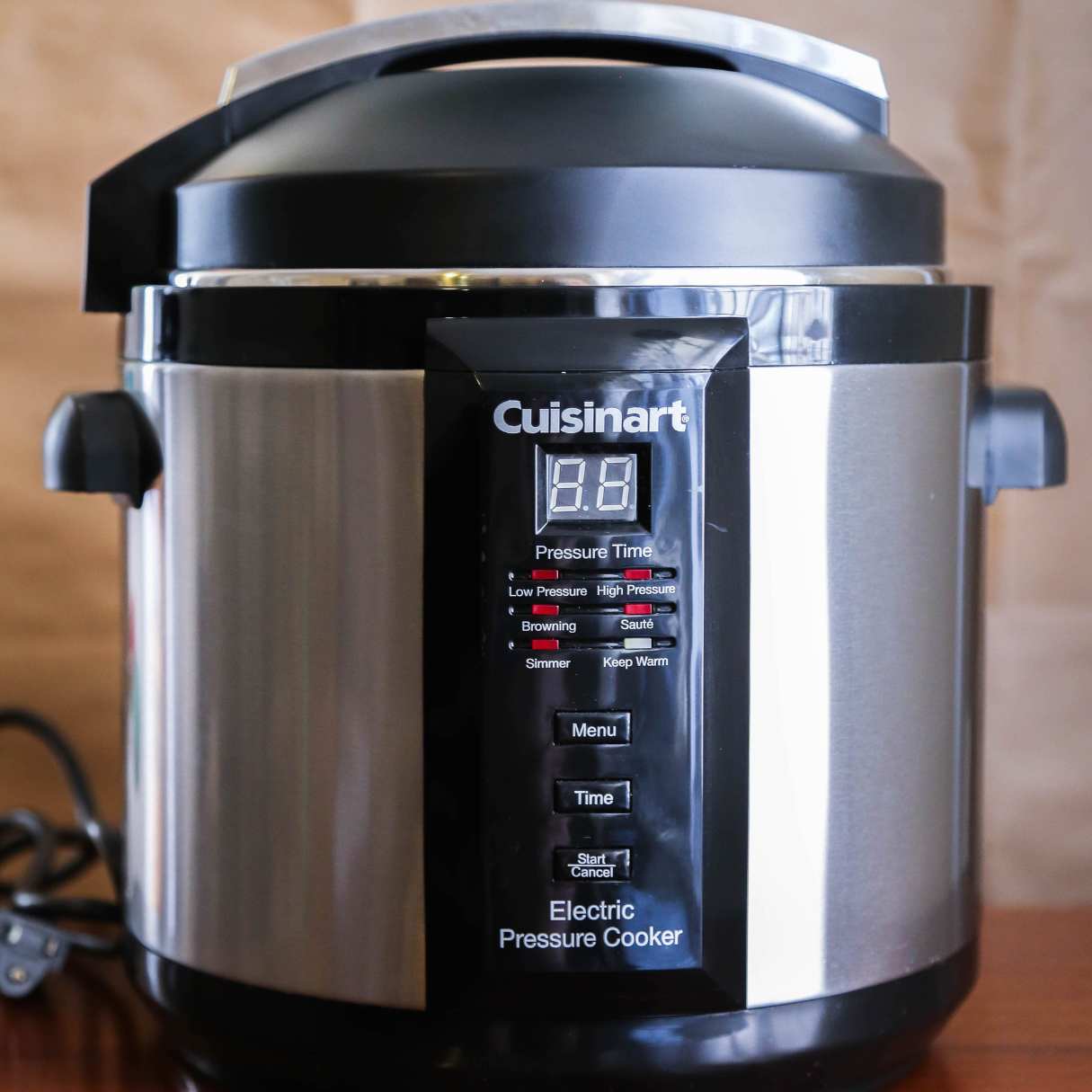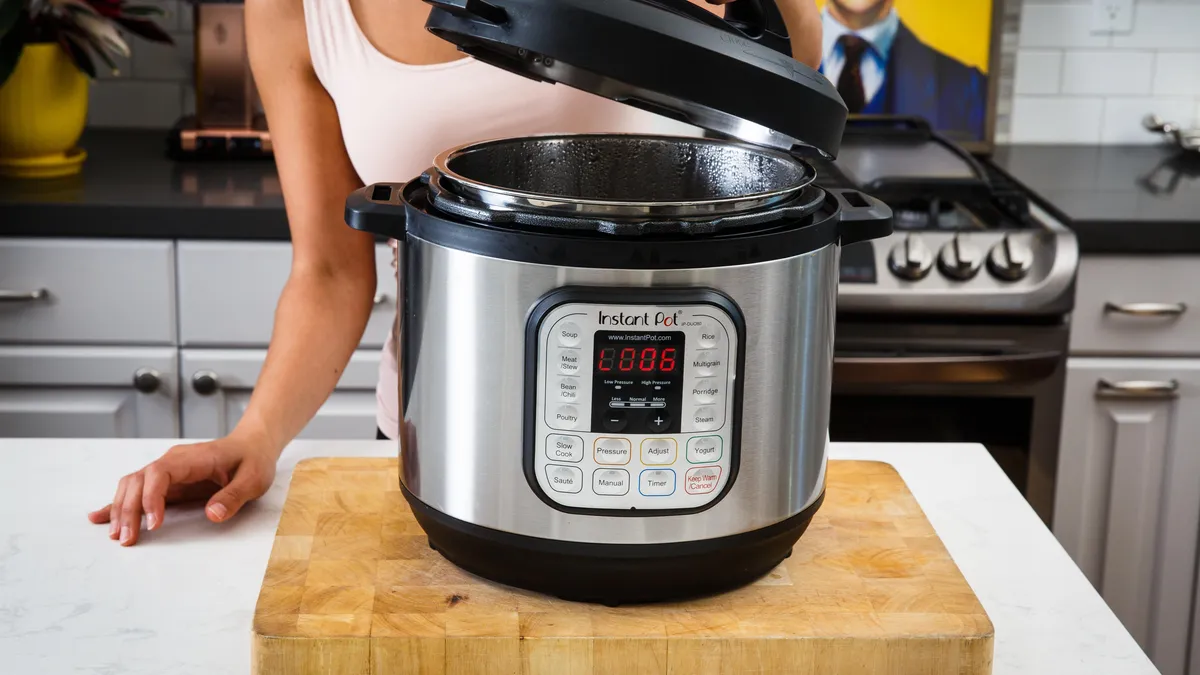Introduction
Are you looking for a convenient and efficient way to cook your meals? Look no further than an electric pressure cooker. This ingenious kitchen appliance has revolutionized the cooking experience for many people, making it faster, easier, and more enjoyable. Whether you’re a busy professional, a novice cook, or someone who simply wants to save time in the kitchen, an electric pressure cooker can be a game-changer.
In this article, we will delve into the inner workings of an electric pressure cooker and explore how it operates to create delicious meals in a fraction of the time compared to traditional cooking methods. From the basic components to the pressure release valve, cooking modes, sealing ring, heating element, and safety mechanisms, we will provide you with a comprehensive understanding of how an electric pressure cooker works.
Get ready to embark on a culinary adventure as we unravel the science behind the magic of an electric pressure cooker. By the end of this article, you’ll not only have a clearer understanding of this remarkable appliance but also feel inspired to create mouthwatering dishes right in your own kitchen!
What is an Electric Pressure Cooker?
An electric pressure cooker is a modern kitchen appliance that uses high-pressure steam to cook food quickly and efficiently. It is a versatile kitchen tool that can be used to prepare a wide variety of dishes such as soups, stews, rice, beans, and even desserts. Unlike traditional stovetop pressure cookers, electric pressure cookers are powered by electricity and come with built-in controls and safety features.
The main purpose of an electric pressure cooker is to reduce cooking time significantly. It achieves this by creating a sealed, airtight environment where pressure builds up, increasing the boiling point of water. This higher boiling point helps break down tough fibers in food faster, resulting in tender and flavorful dishes in a fraction of the time compared to conventional cooking methods.
One of the key advantages of electric pressure cookers is their ease of use. They typically come with pre-programmed cooking modes for different types of food, making it simple even for beginners to cook a wide variety of dishes with just the push of a button. Additionally, most electric pressure cookers have a “keep warm” function that automatically kicks in after cooking, ensuring that your food stays hot and ready to serve until you’re ready to eat.
Electric pressure cookers are designed with safety in mind. They feature locking lids and advanced pressure release valves that prevent the pot from being opened while there is still pressure inside. This helps prevent accidents and ensures that you can cook with peace of mind. Some electric pressure cookers also come with additional safety features such as sensors that detect if the lid is not properly closed or if the internal temperature becomes too high, triggering an automatic shutdown.
In summary, an electric pressure cooker is a modern and efficient kitchen appliance that uses high-pressure steam to cook food quickly. With their convenience, versatility, and safety features, electric pressure cookers have become a popular choice for those who want to save time and enjoy delicious meals at home with minimal effort. In the next section, we will explore the basic components of an electric pressure cooker and how they work together to create the pressure cooking magic.
Basic Components of an Electric Pressure Cooker
To understand how an electric pressure cooker works, it’s important to familiarize ourselves with its basic components. While different models may have slight variations in design, most electric pressure cookers share common elements that are essential for their functioning.
1. Inner Pot: The inner pot is where the food is placed for cooking. It is typically made of stainless steel or non-stick material, and it is removable for easy cleaning.
2. Lid: The lid is an essential part of the pressure cooker as it creates a sealed environment. It is equipped with a rubber gasket or sealing ring that ensures no steam escapes during the cooking process.
3. Pressure Release Valve: The pressure release valve is an important safety feature. It allows the release of excess pressure when necessary, preventing a dangerous build-up inside the cooker. It can be manual or automatic, depending on the model.
4. Control Panel: The control panel consists of buttons or a digital interface where you can select cooking time, pressure, and other settings. This allows you to customize the cooking process according to the recipe requirements.
5. Temperature and Pressure Sensors: Electric pressure cookers are equipped with temperature and pressure sensors that monitor the cooking environment. These sensors ensure that the internal temperature and pressure are maintained within safe limits during the cooking process.
6. Heating Element: The heating element is responsible for generating the heat needed to cook the food. It is typically located at the bottom of the pressure cooker and heats up the liquid inside, creating steam and raising the pressure.
7. Sealing Ring: The sealing ring is a crucial component that ensures the pressure cooker remains airtight. It is positioned around the inside of the lid, creating a tight seal to prevent steam from escaping.
Understanding these basic components is key to comprehending how an electric pressure cooker functions. In the next section, we’ll explore the process by which an electric pressure cooker creates and maintains pressure, allowing for efficient and rapid cooking.
How Does an Electric Pressure Cooker Create Pressure?
Creating and maintaining pressure is the fundamental principle behind the functionality of an electric pressure cooker. This process involves a combination of heat, steam, and an airtight environment. Let’s explore how an electric pressure cooker creates pressure to cook food faster and more efficiently.
1. Adding Liquid: Before using an electric pressure cooker, it is important to add a sufficient amount of liquid, such as water or broth, to the inner pot. This liquid is needed to generate steam, which is crucial for building pressure.
2. Sealing the Lid: Once the inner pot is filled with food and liquid, the lid of the electric pressure cooker must be securely sealed. The sealing ring ensures that no steam escapes during the cooking process, creating a pressurized environment inside the cooker.
3. Heating the Liquid: When the electric pressure cooker is turned on, the heating element located at the bottom of the cooker begins to generate heat. This heat causes the liquid inside the inner pot to reach a boiling point and create steam.
4. Increasing Pressure: As the liquid boils and turns into steam, the pressure inside the cooker starts to increase. This occurs because the steam has nowhere to escape, as the lid is securely sealed, creating a sealed and airtight environment.
5. Monitoring Pressure: The electric pressure cooker is equipped with sensors that monitor and regulate the internal pressure. These sensors ensure that the pressure remains within safe limits and prevent excessive pressure build-up.
6. Cooking Time: The increased pressure inside the cooker allows for faster cooking times compared to traditional methods. The higher pressure and temperature help break down tough fibers in the food, resulting in tender and flavorful dishes in a fraction of the time.
7. Pressure Release: After the desired cooking time elapses, the pressure needs to be released before the lid can be safely opened. There are two main methods for pressure release: natural release and quick release. Natural release involves allowing the pressure to naturally subside over time, while quick release involves manually releasing the pressure using the pressure release valve.
By effectively harnessing heat, steam, and airtight sealing, an electric pressure cooker is able to create and maintain the desired pressure levels for efficient and accelerated cooking. In the next section, we will delve into the role of the pressure release valve and how it ensures the safety of an electric pressure cooker.
The Role of the Pressure Release Valve
The pressure release valve is a crucial component of an electric pressure cooker that ensures the safety and proper functioning of the appliance. This valve is designed to release excess pressure when necessary, preventing a dangerous build-up inside the cooker. Let’s explore the role of the pressure release valve in detail.
1. Pressure Regulation: The pressure release valve helps regulate the pressure inside the electric pressure cooker. It allows excess steam and pressure to escape, preventing the pressure from exceeding safe limits. This helps to maintain a controlled cooking environment and avoids the risk of potential accidents or damage.
2. Manual or Automatic: Pressure release valves can be manual or automatic, depending on the model of the electric pressure cooker. Manual valves require the user to turn a knob or switch to release the pressure manually, while automatic valves release the pressure automatically when a certain safe pressure limit is reached.
3. Quick Pressure Release: The pressure release valve is especially important during the quick pressure release process. Quick pressure release involves manually releasing the pressure inside the cooker shortly after the cooking time elapses. By carefully positioning the valve to the “venting” or “pressure release” position, the pressurized steam is released quickly, allowing the lid to be safely opened.
4. Natural Pressure Release: In addition to quick pressure release, some recipes or cooking methods require natural pressure release. This involves allowing the pressure inside the cooker to gradually decrease on its own. During natural pressure release, the valve remains closed, allowing the pressure to slowly subside over time until it is safe to open the lid.
5. Safety Mechanism: The pressure release valve acts as a vital safety mechanism to prevent potentially dangerous situations. If the pressure inside the electric pressure cooker exceeds safe levels, the valve will automatically release the excess pressure, lowering the risk of explosion or other accidents.
It is essential to follow the manufacturer’s instructions for using the pressure release valve correctly. Improper handling or neglecting to release pressure before opening the lid can lead to dangerous outcomes. Always ensure that the pressure release valve is functioning correctly and is free from any blockages to maintain optimal safety.
The pressure release valve plays a crucial role in maintaining safety and preventing excessive pressure build-up in an electric pressure cooker. Understanding how to use and handle the valve properly is key to ensuring a safe and enjoyable cooking experience. In the next section, we will explore the various cooking modes available in an electric pressure cooker.
Understanding the Cooking Modes
Electric pressure cookers come equipped with various cooking modes that allow you to easily prepare a wide range of dishes with precision and convenience. These cooking modes are designed to optimize cooking times and temperatures for different types of food. Let’s explore some of the common cooking modes found in electric pressure cookers.
1. Pressure Cook: The pressure cook mode is the primary mode of an electric pressure cooker. It allows you to cook food under high pressure, significantly reducing cooking time. This mode is perfect for recipes that require tenderizing tough cuts of meat or speeding up the cooking process for ingredients such as beans or grains.
2. Sauté/Browning: The sauté or browning mode is used to preheat the electric pressure cooker and brown ingredients like meat or vegetables before pressure cooking. This mode allows you to add depth of flavor and texture to your dishes by allowing caramelization and the development of delicious Maillard reactions.
3. Rice: The rice mode is specifically designed to cook rice perfectly, whether it’s white rice, brown rice, or even specialty rice like basmati or jasmine. This mode takes into account the ideal cooking time and pressure to ensure perfectly cooked fluffy rice every time.
4. Steam: The steam mode is ideal for cooking delicate foods such as fish, vegetables, or dumplings. This mode allows you to cook these items quickly and efficiently while retaining their nutritional value and natural flavors.
5. Slow Cook: The slow cook mode is reminiscent of traditional slow cookers. It enables you to simmer and slow-cook dishes over a longer period at low temperatures, resulting in tender and flavorful meals. This mode is perfect for soups, stews, and braised dishes.
6. Yogurt: Some electric pressure cookers have a yogurt mode that makes it easy to incubate homemade yogurt. This mode provides a precise and controlled environment for the fermentation process, ensuring consistent and delicious results.
Each cooking mode in an electric pressure cooker is designed to simplify and streamline the cooking process for specific types of food. These modes eliminate the guesswork associated with traditional stovetop cooking and allow you to achieve consistent and reliable results with ease.
Familiarizing yourself with the various cooking modes of your electric pressure cooker will expand your culinary repertoire and enable you to experiment with a wide range of recipes. In the next section, we’ll discuss the importance of the sealing ring in an electric pressure cooker.
The Importance of the Sealing Ring
The sealing ring is a vital component of an electric pressure cooker, playing a crucial role in creating an airtight and secure cooking environment. This rubber gasket, usually made of silicone, ensures that no steam escapes during the cooking process, allowing the pressure to build and cook the food effectively. Let’s explore the importance of the sealing ring in more detail.
1. Airtight Seal: The sealing ring creates an airtight seal between the lid and the inner pot of the electric pressure cooker. This seal prevents any steam or pressure from escaping while cooking, enabling the pressure to build and cook the food faster and more efficiently.
2. Pressure Build-Up: As the electric pressure cooker heats up and the liquid inside begins to boil, steam is generated. The airtight seal created by the sealing ring traps the steam inside the cooker, causing the pressure to increase. This higher pressure raises the boiling point of the liquid, resulting in faster cooking times.
3. Safety Precaution: The sealing ring ensures that the lid remains securely in place during the cooking process. This prevents accidental opening of the cooker while it is pressurized, reducing the risk of burns or spilling hot liquid. It is essential to never attempt to open the lid of an electric pressure cooker until the pressure has been fully released.
4. Wear and Tear: Over time and with regular use, the sealing ring may become worn or lose its effectiveness. It is important to regularly inspect the sealing ring for any signs of damage or degradation. If the sealing ring becomes cracked, brittle, or no longer fits snugly, it should be replaced to ensure proper sealing and safe operation of the electric pressure cooker.
5. Cleaning and Maintenance: Proper cleaning and maintenance of the sealing ring are essential to prolong its lifespan and maintain its functionality. After each use, remove the sealing ring and wash it with warm soapy water, ensuring that it is free from any debris or food particles. Additionally, ensure that the sealing ring is completely dry before reattaching it to the electric pressure cooker to prevent any risk of mold or mildew.
The sealing ring is an integral part of the electric pressure cooker, as it facilitates the proper functioning of the appliance, ensures efficient cooking, and enhances safety. Regular inspection, cleaning, and replacement, if necessary, will help maintain the effectiveness of the sealing ring and optimize the performance of your electric pressure cooker.
Now that we understand the importance of the sealing ring, let’s move on to discussing the heating element and temperature control in an electric pressure cooker in the next section.
The Heating Element and Temperature Control
The heating element and temperature control system are essential components of an electric pressure cooker, working together to generate and regulate the heat necessary for cooking. Understanding how these elements work is key to achieving precise and controlled cooking results. Let’s explore the heating element and temperature control in more detail.
1. Heating Element: The heating element is responsible for generating the heat needed to cook the food in the electric pressure cooker. Typically located at the bottom of the cooker, it converts electrical energy into heat. As the heating element heats up, it transfers this heat to the liquid in the inner pot, allowing the liquid to reach its boiling point and produce steam.
2. Temperature Control: Electric pressure cookers come with a temperature control system that allows you to set and maintain the desired cooking temperature. This control system ensures that the heat produced by the heating element remains consistent throughout the cooking process. The temperature control system uses a thermostat or advanced electronic controls to monitor and adjust the heat output as needed, ensuring precise and even cooking.
3. Cooking Modes and Temperature: Electric pressure cookers offer various cooking modes, each designed to operate at a specific temperature range. For example, the sauté mode operates at a higher temperature for browning ingredients, while the slow cook mode operates at a lower temperature for long, slow cooking. The temperature control system in the electric pressure cooker ensures that the temperature remains within the specified range for each cooking mode, allowing for optimal cooking results.
4. Keep Warm Function: Many electric pressure cookers have a keep warm function that automatically engages after the cooking process is complete. The temperature control system maintains a lower, consistent temperature to keep the cooked food warm until you’re ready to serve. This feature is especially useful when you’re preparing multiple dishes or want to keep your meal hot for an extended period.
5. Additional Safety Features: Some electric pressure cookers incorporate additional safety features related to the heating element and temperature control. For instance, certain models have sensors that detect if the internal temperature becomes too high, automatically shutting off the heating element to prevent overheating. These safety mechanisms help protect the cooker from potential damage and ensure safe operation.
The heating element and temperature control system work harmoniously to create and maintain the desired cooking temperatures in an electric pressure cooker. This precise temperature control allows for consistent and reliable results, making your cooking experience more efficient and enjoyable.
Now that we understand the heating element and temperature control, let’s dive into how an electric pressure cooker maintains safety in the next section.
How Does an Electric Pressure Cooker Maintain Safety?
Safety is a top priority when using any kitchen appliance, and electric pressure cookers are no exception. These devices are equipped with several safety features and mechanisms to ensure a safe cooking experience. Let’s explore how electric pressure cookers maintain safety during operation.
1. Lid Locking Mechanism: Electric pressure cookers are designed with a lid locking mechanism that prevents the lid from being opened while there is still pressure inside the cooker. This mechanism ensures that you cannot accidentally open the cooker and exposes yourself to the hot steam or pressure during the cooking process.
2. Pressure Release Valve: The pressure release valve is a key safety feature in an electric pressure cooker. It allows for the controlled release of excess pressure when necessary. In the event that the pressure inside the cooker exceeds safe limits, the pressure release valve automatically releases the excess steam to prevent a dangerous build-up.
3. Automatic Shut-Off: Some electric pressure cooker models are equipped with an automatic shut-off feature for added safety. This feature detects if the internal temperature becomes too high or if other safety parameters are exceeded, automatically shutting off the heating element to prevent overheating or other potential hazards.
4. Safety Lid Lock: Electric pressure cookers often come with a safety lid lock feature that ensures the lid cannot be opened until the pressure has been fully released. This prevents any accidental steam releases or spills that may occur if the pressure is not properly released.
5. Overheat Protection: Electric pressure cookers are equipped with overheat protection mechanisms to prevent the appliance from becoming dangerously hot. These mechanisms monitor the temperature during the cooking process and automatically shut off the heating element if the temperature exceeds safe limits, preventing the risk of fire or damage.
6. Safety Sensors: Electric pressure cookers are fitted with various sensors that monitor the temperature, pressure, and overall operation of the cooker. These sensors ensure that the cooking process remains within safe parameters and can detect and prevent any abnormalities or malfunctions.
It is essential to follow the manufacturer’s instructions and guidelines when using an electric pressure cooker to ensure proper and safe operation. Regular maintenance, such as cleaning and inspecting the sealing ring, checking for any damage or wear, and replacing worn-out parts, is also crucial for maintaining safety.
With these safety features in place, you can confidently use an electric pressure cooker to prepare delicious meals, knowing that the appliance is designed to prioritize your safety throughout the cooking process.
Now that we have explored how electric pressure cookers maintain safety, let’s conclude with a summary of the key points covered in this article.
Conclusion
Electric pressure cookers have transformed the way we cook, providing a convenient and efficient method for preparing meals. By harnessing the power of high-pressure steam, these appliances dramatically reduce cooking time while delivering delicious and flavorful results. Throughout this article, we’ve explored the inner workings of electric pressure cookers, including their basic components, pressure creation, the role of the pressure release valve, cooking modes, the importance of the sealing ring, heating elements, temperature control, and safety mechanisms.
Understanding the components and mechanisms of an electric pressure cooker allows us to harness its full potential in the kitchen. The basic components, such as the inner pot, lid, pressure release valve, and control panel, work together to create an airtight and pressurized cooking environment. The cooking modes provide versatility and convenience, enabling us to cook a wide range of dishes with precision and ease.
The sealing ring ensures a secure and airtight seal, facilitating pressure build-up and preventing steam from escaping during cooking. The heating element and temperature control system generate and regulate the heat necessary for efficient and even cooking. Safety features like lid locking mechanisms, pressure release valves, automatic shut-off, and sensors ensure a safe cooking experience.
By embracing the benefits of an electric pressure cooker, we can save time in the kitchen without sacrificing the quality and taste of our meals. Whether you’re a busy professional, a novice cook, or simply someone who enjoys experimenting with new recipes, an electric pressure cooker is a valuable addition to your culinary arsenal.
So, why not embark on a culinary adventure and unleash the full potential of your electric pressure cooker? Prepare a variety of meals with ease, and enjoy the taste of flavorful dishes made in a fraction of the time. With the right understanding and a pinch of creativity, you’ll be able to create delicious meals that will impress your family and friends.
Now, it’s time to get cooking and explore the limitless possibilities that an electric pressure cooker offers. Happy cooking!







